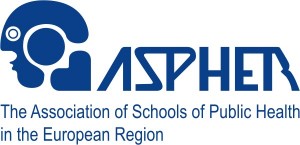
This project has been shortlisted for the DPH Innovation Prize 2019 – Best Data Driven Innovation
Team: Gaurav Kaushik, Amit Gupta, Kapil Dev Soni, Narendra Choudhary and Ankita Sharma (JPNATC, AIIMS)
Outline: Background: A trauma registry is a disease-specific data collection composed of a file of uniform data elements that describe the injury even, demographics, prehospital information, diagnosis, care, outcomes and costs of treatment for injured patients.
Objective: To establish a trauma registry system on electronic platform enabling data capturing through android phones.
Methods: A web based electronic platform has been designed to use in Emergency Department which can be used on android phones/laptops with internet access. It has two panels, 1) is administrative panel another one (2) is user panel. The User panel is being used for data entry by the trained data collectors 24/7 at emergency department on rotation basis. The admin panel and user panel are password protected and can be accessed by the investigator, data collectors or another authorized person. Admin panel is to create the users as per the requirement of the study site. Each user has been provided the separate login ID and password by the administrator. Data can be downloaded only when the form is completely filled. In case the form is partially filled by the user, it cannot be downloaded until filled completely. The entered data is being saved in excel sheet at backend which can be downloaded for periodic data quality check and data analysis.
Results: To promote the standardized collection of data of trauma cases and improve quality of trauma care, a robust trauma registry has been established by agreeing on minimum data set suitable for all levels of trauma centres. From Oct 1st 2017 till 31st May 2019, total trauma patients arrived at JPNATC were 40747. Of these, 9085 RTI patients triaged to red and green area were recruited in the registry. The data have been entered into the registry software. Of 9085 RTI patients, 29% were admitted to the hospital, 49% were discharged and 22% fall in another category (abscond, LAMA, transferred, deaths). The data collection was carried out by the research nurses posted for 24/7 at the emergency department of JPNATC, AIIMS, New Delhi. Most of the data collected in the registry was real-time, however, data was also abstracted from the hospital records. The average time to enter the data electronically takes approximately 15 min and on an average 25-30 RTI patients (Yellow and Red) arrive in ED per day. All the data collectors were provided with a tablet dedicated to the registry data entry. Data collectors were in shift duties on rotation for 8am to 2 pm, 2 pm to 8 pm and 8pm to 8am with one night off.
Conclusion: There is no trauma registry in India so far for the road traffic injury patients. Present innovation would lay the foundation of national Trauma Registry in India.










